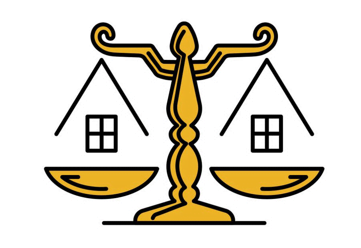Introduction
WHAT IS ANCILLARY RELIEFS?
INTRODUCTION
“Ancillary” connotes “supplementary”… something that supports the central object. In divorce proceedings, the courts usually grant supplementary reliefs to make the divorce order practical and sensible. Such reliefs are called “ancillary reliefs”. Some of which include:
· Settlement of property.
· Division of property.
Part IV of the Matrimonial Causes Act provides for the reliefs. Note however that Part IV shall ONLY APPLY to:
(1.) Parties to a statutory marriage and
(2.) Children of the (statutory) marriage. A statutory marriage has been defined by lord Penance in Hyde V Hyde as a voluntary union for life of one man and one woman to the exclusion of all others during the continuance of the marriage.
Parties to a Statutory Marriage:
This includes a husband and wife of a statutory marriage (whether void or voidable). At common law, only the wife was considered / entitled to ancillary reliefs but that is not the case at present. However, Parties to a customary or Islamic law marriage are not entitled to the ancillary reliefs under Part IV.
Children of the marriage:
“Children of the marriage” to include;
1. Any child adopted since the marriage by the husband and the wife or by either of them with the consent of the other.
2. Any child of both spouses born before the marriage whether legitimated or not..
3. Any child (illegitimate or adopted) of either party if at the relevant time was ordinarily a member of the household of the husband and wife: The Act defined “relevant time”; the time immediately proceeding the time when the husband and wife ceased to live together.
Or if they have ceased to live together more than once, the time immediately preceding the time when they lack the time when they last ceased to live together before the institution of the proceedings. Or if they were living together when the proceeding was instituted, the time immediately preceding the institution of the proceedings. In May V May, the court noted: “member of a household” does NOT mean physical presence or residence… the child must be treated as a member of the household.
The phrase; “immediately” means that no substantial time should have lapsed. It is a question of fact and circumstances. In Asomugha V Asomugha, the wife had two daughters before she married the man. The man treated them as his daughters and even represented them to be such to his employer for official records. The court held that the girls were children of the marriage. The court held that since the children were treated as an integral part of the family, they are children of the marriage.
In Cunningham V Cunningham, the children of the wife’s former marriage were being taken care of by the wife’s parents (i.e. the children’s maternal grandmother). The court held that they were not children of the marriage.
In Conclusion, a child (of the parties) that has been adopted by a third party cannot be regarded as a child of the marriage.
REFERENCE:
1. (1866) LR 1 P&D 130.
2. Section 69 Matrimonial Causes Act.
3. Aneke V Aneke (1971) All N.L.R. 268.
4. Section 69 Matrimonial Causes Act.
5. [1986] 1 FLR 325.
6. Osemabor V Osemabor {1973} N.C.L.R. 382.
7. 99 N.E. 845 (N.Y. 1912).
8. Section 69 (c) Matrimonial Causes Act.
Contact Us
For premier legal research services in litigation cases in Nigeria, contact Chaman Law Firm today. Our offices are conveniently located in Lagos, FCT Abuja, Ogun State, and the UK. We are readily available to assist you with your legal needs. Whether you require consultation, representation, or ongoing legal support, Chaman Law Firm is your trusted partner in navigating legal research law in Nigeria.
WRITTEN BY: CHAMAN LAW FIRM TEAM
https://www.chamanlawfirm.com/about-us/
Call us at 08065553671 or email us at info@chamanlawfirm.com to schedule a consultation.


